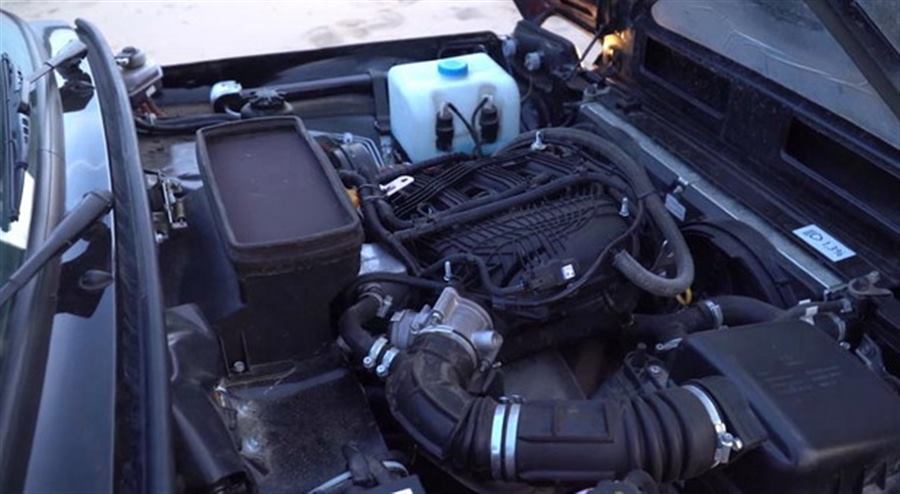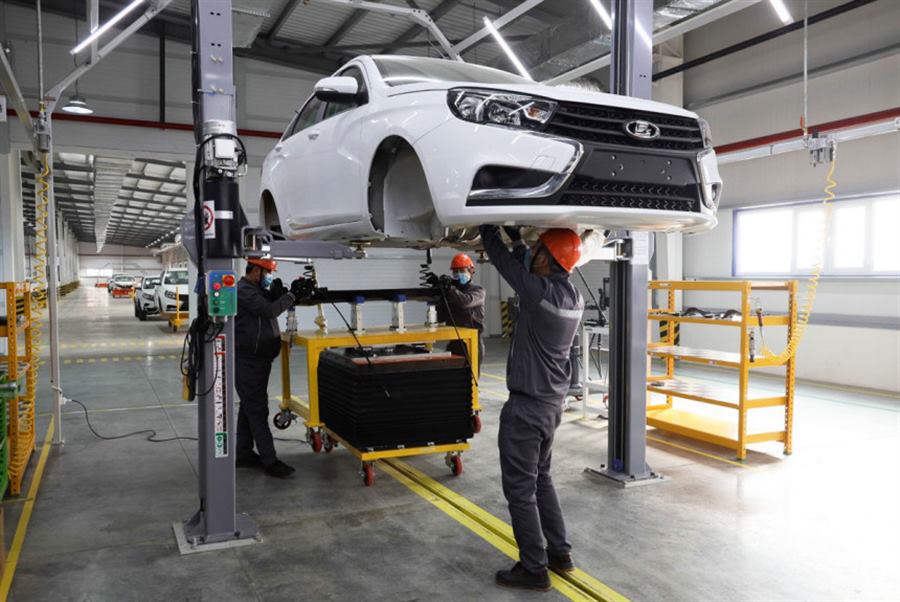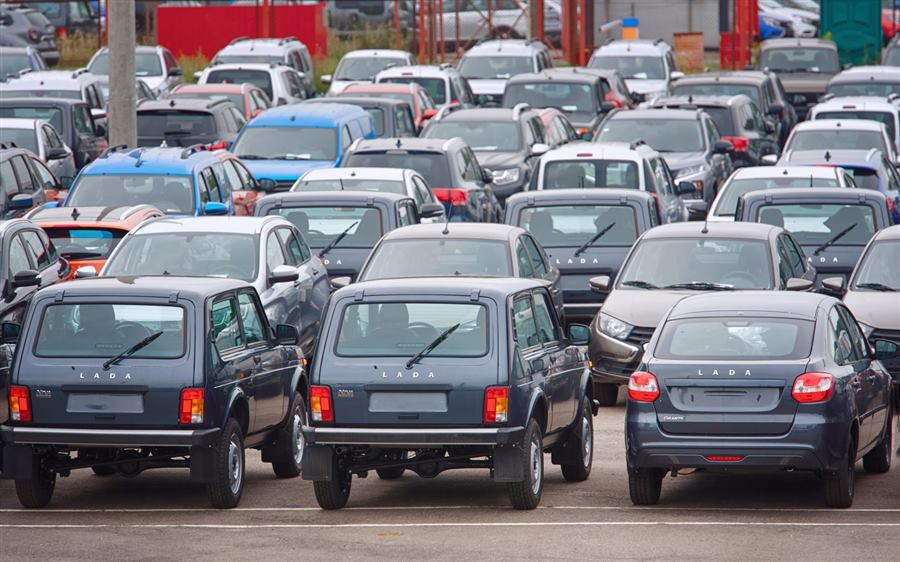Lada
-
For little money, the Germans build a Lada Niva on electricity

Every car can be redesigned to run on electricity, even the legendary Lada Niva. The famous SUV has been sold since the first day with basically the same engine, which has been modernized several times. About 80 horses were pulled from the 1.7 liter volume and thus fully satisfies all aspects of off-road riding. Almost everything, because those who want to join the electrification trend are certainly not satisfied with this option. That is why the German company offered a version of the electric Niva, which is probably the cheapest electric model on the market.
Thus, after the diesel version, most often at home, the Lada Niva now got an electric variant. It is offered by the German start-up Schmid GmbH, and the electric package is named Elantria, writes Index.hr.
As you can see in the photos, the electric Niva differs visually from the standard only in that there are no pipes in the exhaust system. Under the hood is an electric motor that uses existing mechanics and drives all four wheels. It develops a minimum of more power than a regular Niva, or 88 hp.
The electric set also includes a LiFePO4 lithium-ion battery with a capacity of 30 kWh, which is positioned on the former location of the fuel tank. The range is, depending on the driving style, from 130 to 300 km. The manufacturer guarantees 80% of the battery capacity after 9,000 charge cycles or 450,000 km, which is significantly more than what the Nivas go through in practice.
Of the interesting details, we point out that the drive of this Niva can, if necessary, work as a power generator and drive other devices. It has a 220V socket and power up to 2 kW.
And finally the price. The set will cost you 2,800 euros, and there is also a new electric Niva on offer with a price of 19,900 euros.
If you take into account the price of fuel and consumption, and put it in relation to the cost of electric drive, this conversion literally pays off after a year and a half, or rather after less than 25,000 km. After all, if you take into account the price of a solid used copy and processing, you come to the amount that is by far the cheapest electric option on the market.
-
Lada Niva got a new engine

First of all, take the epithet "new" with caution. This is a classic for whom reliability and robustness are important. However, this is a drastic departure from everything so far. And that wasn't much, so the Niva started with a 1.6 petrol carburetor, then got a 1.7 engine with several upgrades, and now gets a 1.8 unit as well.
According to Index.hr, this is a 1.8 engine known from Lada Vesta. The classic atmosphere gives 122 hp and 170 Nm of torque, significantly more than 1.7 engines, and it will be installed in the Niva by the company Super-Auto, also from Togliatti. The engine is located longitudinally, and the list of changes included the clutch, cooling system and exhaust. It is expected that Lada will now be significantly more starting, so it could reach 100 km / h in 12 to 13 seconds, writes Lada Online.
It is also known that 300 copies of the Niva Legend with a 1.8 engine will be produced annually, and the starting price is still an acceptable 14,000 euros.
-
Production of Lada's cars in Uzbekistan has started

Here, the term "production" should be taken in a broader sense, because this is an assembly on the principle of "screwdriver industry".
The Russian brand intends to drastically increase its presence outside the domestic market, and one of the countries in which they wish greater success is Uzbekistan. Lada used to be dominant in the market of that country during the time of the USSR, but since this giant collapsed, Uzbeks have turned to other car brands.
Thus, only 5,000 new Lada were sold in Uzbekistan last year, and this manufacturer had a market share of less than 3%. It is Lada's wish that the participation in this former Soviet republic drastically increase.
The Russians have found a partner in Uzbekistan, the company Roodell, which will assemble their models on the soil of that country. This will enable a lower price of Lada's cars, but it will also open the option for state-owned companies and institutions to take these four-wheelers into account, as they will be conditionally considered domestic products.
It is interesting that Roodell owns a factory where the assembly of vehicles of another brand - Korean Kia - is already performed. Lada's trump cards will also come from the same plant, with a total annual capacity of 25,000 units.
The Russian manufacturer plans to mount the following models in Uzbekistan: Lada Vesta in Cross, SW, and SW Cross editions, then Largus and Largus Cross, as well as XRAY Cross.
-
Sales of Lada in Russia jumped sharply, and the reason is known

During August, Lada saw a sales growth of as much as 75 percent in Russia, as a government subsidy program succeeded in boosting demand in the country.
Lada, which is part of AvtoVAZ, saw a sharp jump in sales in August, at a rather awkward time for Russia's auto industry, which has been in deep trouble since the start of the conflict in Ukraine.
The Russian brand sold a total of 18,087 passenger cars last month, a 75 percent jump from July. And while sales are down 7 percent from last August, it's Lada's best monthly sales since Russia sent tens of thousands of troops into Ukraine in February. Maksim Sokolov, president of AvtoVAZ, pointed out that sales of two Lada models, Grant and Niva, have already reached the level before this crisis, which he marked as an important step for this company towards recovery.
"We will successfully overcome the current difficulties and meet the demand on the Russian car market," the official statement said.
The company, which employs about 42,000 people, said a government subsidy program to help buy new cars helped boost demand. Russia's auto sector, which is heavily dependent on foreign parts and global supply chains, practically ground to a halt when sanctions were imposed on Russia following the invasion of Ukraine.
For example, car production in Russia fell by 97 percent in May as many companies, such as AvtoVAZ, were forced to close factories and offer workers severance packages to leave the company. However, it should be noted that the cars currently produced by Lada are actually rudimentary versions, without numerous equipment such as ABS, ESP, airbags and electric windows.










